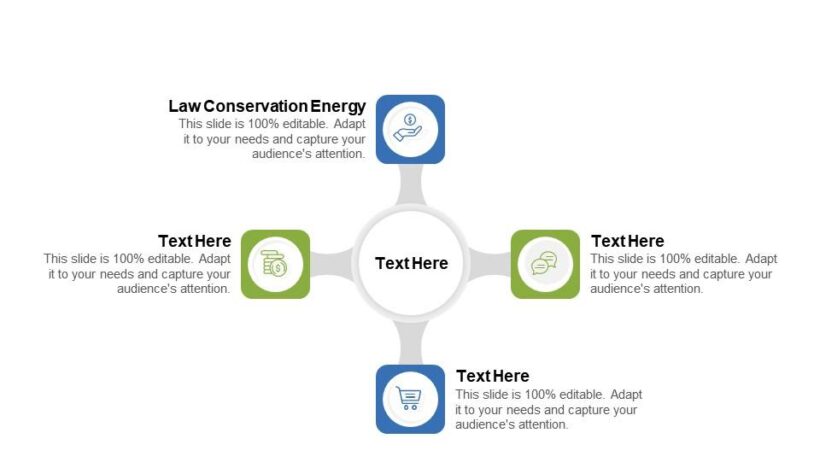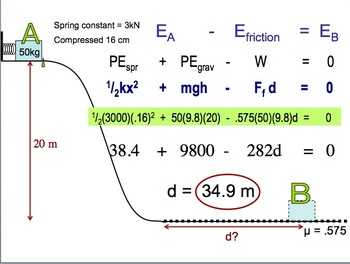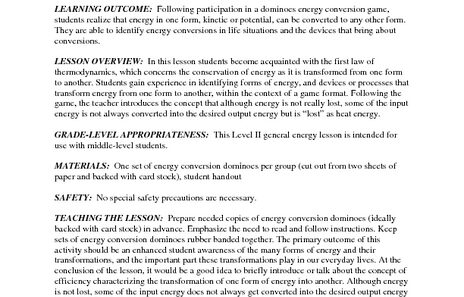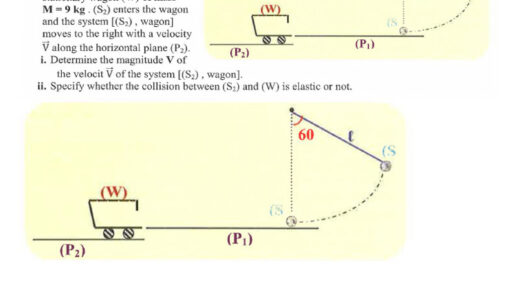The Law of Conservation of Energy is a fundamental principle in physics that asserts energy cannot be created or destroyed but only transformed from one form to another. This inexorable law underpins an array of scientific avenues, spurring innovation and necessitating ethical considerations in energy usage. The subsequent exploration provides a comprehensive visual guide intended for students seeking to grasp this pivotal concept.
Consider this playful question: If you had a magic box that could transform any type of energy into another while ensuring no energy is lost—what would you do with it? This whimsical inquiry underscores the essence of the Law of Conservation of Energy: the inevitability of energy transformation. Furthermore, this concept introduces a potential challenge for students. Can they identify scenarios in their daily lives where this law is at play? Thought-provoking, isn’t it?
The principle itself can be simplified into three salient facets: energy types, energy transformations, and energy conservation in practice. Each segment provides a unique lens through which students can evaluate the dynamics of energy within their surroundings.
Energy Types
At the core of the Law of Conservation of Energy lies a plethora of energy types. Among the most common are kinetic energy, potential energy, thermal energy, and chemical energy. Kinetic energy, the energy of motion, is readily observed when a car glides down a hill. It is a favorable example of energy in its active form. In contrast, potential energy embodies stored energy, waiting to be converted. A coiled spring or a boulder perched atop a cliff illustrates this duality. The transformation between kinetic and potential energy is seamless, particularly in mechanical scenarios such as pendulums or roller coasters.
Thermal energy, stemming from heat, represents another form that is immensely significant in both natural processes and human applications. When you light a match, the chemical energy stored within the matchstick converts to thermal energy, culminating in combustion. This transformation is prevalent across various sectors, from manufacturing to cooking, accentuating the omnipresence of energy changes in daily life.
Additionally, students must recognize the chief role of chemical energy in biological systems. Foods, fuels, and batteries all serve as reservoirs of chemical energy. Upon metabolism or consumption, this energy is released into transformable forms for human and environmental benefit. Understanding these self-sustaining and interdependent processes is crucial for students in environmental stewardship.
Energy Transformations
Energy is constantly in flux, and its manifestations offer a captivating tableau for exploration. Each transformation illuminates the law’s intrinsic merit. For instance, a hydroelectric dam converts the potential energy of stored water into kinetic energy, subsequently transforming it into electrical energy through turbines. This multi-layered conversion exemplifies how energy flows through a system, allowing for practical utilities in our modern age, from lighting cities to conducting advanced technologies. Students should visualize these transformations through diagrams and interactive models, promoting an engaging learning experience.
Consider solar energy as another illuminating example. Photovoltaic cells on solar panels transmute radiant energy from the sun into electrical energy. Here, students can witness the transformation over time: solar energy captures and converts, enabling us to harness a sustainable power source. Analyzing these transitions fosters a deeper appreciation for alternatives to fossil fuels, emphasizing sustainability through conservation.
Energy Conservation in Practice
While the Law of Conservation of Energy dictates the fundamental tenets of energy interactions, it simultaneously implicates a pressing ethical responsibility: conscientious energy consumption. As global challenges unfold—such as climate change and resource depletion—students face the challenge of balancing energy needs with ecological integrity. The transition from theoretical comprehension to practical application thus becomes an educational imperative.
Students should engage in projects focused on energy efficiency strategies. Conducting energy audits in homes and schools can yield tangible results in understanding energy waste and conservation opportunities. By assessing areas such as heating and cooling, lighting, and electronic devices, students uncover potential energy-saving practices that are not only achievable but can also contribute to a wider societal shift toward sustainability.
Moreover, integrating renewable energy sources into discussions can illuminate pathways toward greener practices. As the Law of Conservation of Energy establishes that while total energy remains constant, the source of that energy can shift towards more sustainable solutions. Emphasizing local case studies of wind, solar, and biomass energy empowers students to contemplate their role within the global continuum of energy use.
In essence, the Law of Conservation of Energy provides a perspicuous framework to unravel the complexities of energy dynamics. Through engaging visual aids, students can internalize these principles, sparking a sense of curiosity and stewardship towards energy conservation. The journey is not devoid of challenges, but with resolute inquiry and dedicated application, each individual can contribute to a sustainable future. Let us ponder: How will you harness the power of energy conservation to foster a more sustainable world?
In conclusion, the Law of Conservation of Energy serves as a crucial concept not only within the realm of physics but also in our daily lives as advocates for sustainability. The intersection of theory and practice invites students to innovate and implement energy-efficient solutions, thereby ingraining ethical practices in their energy consumption. Shall we embrace this challenge together?








